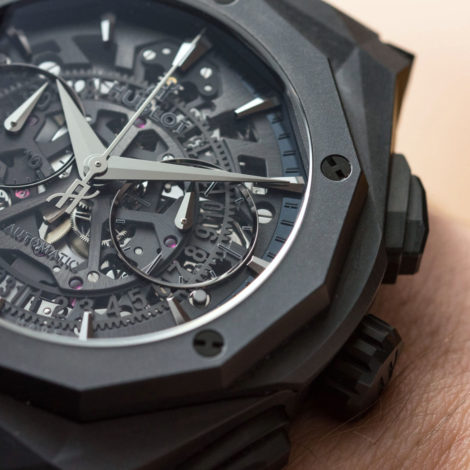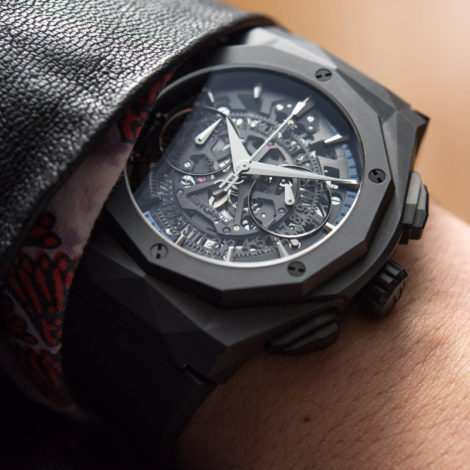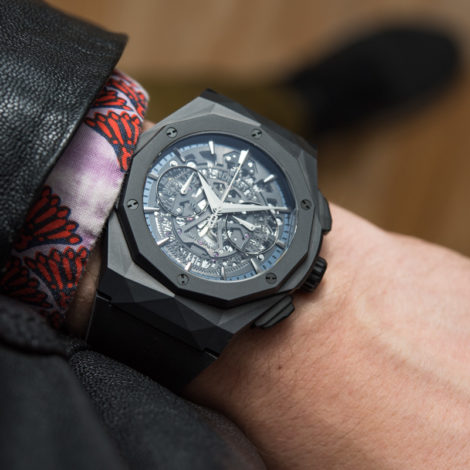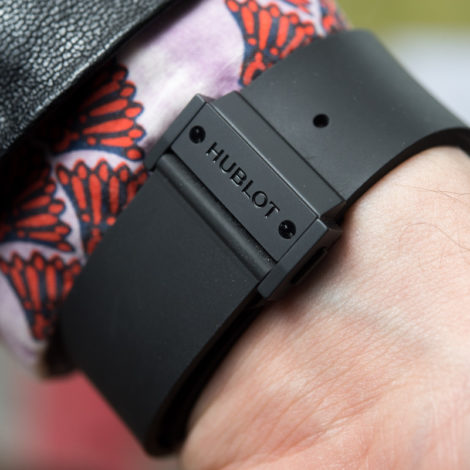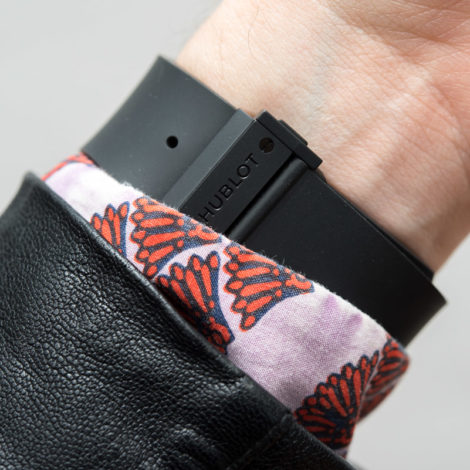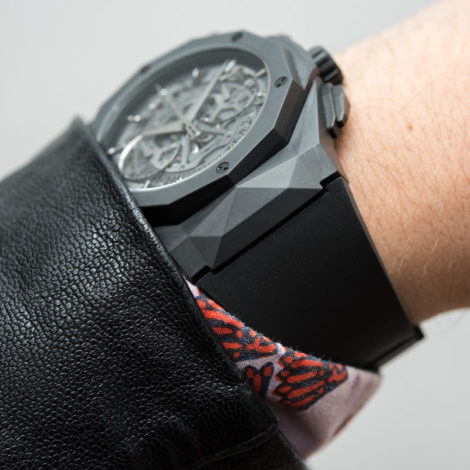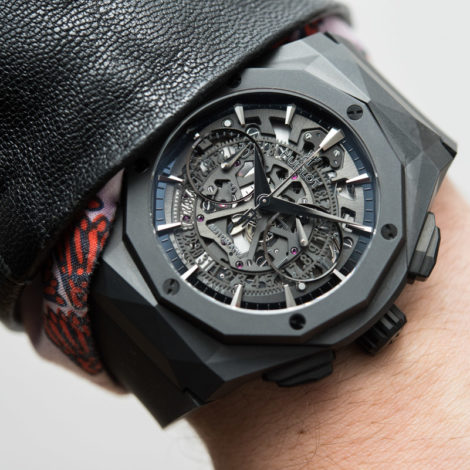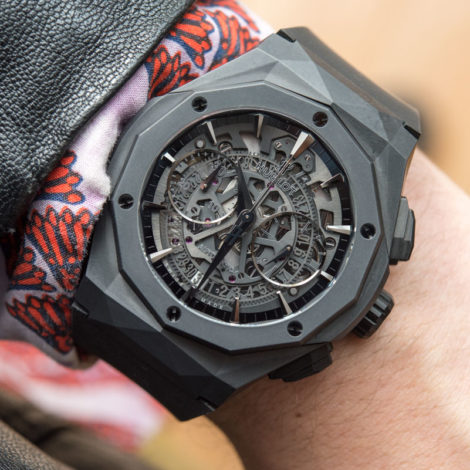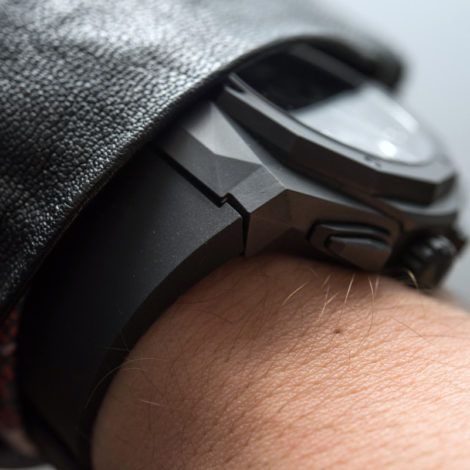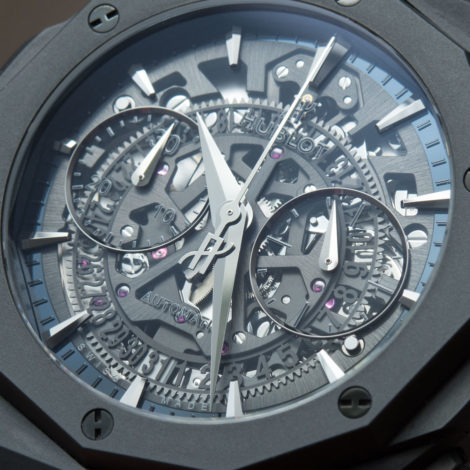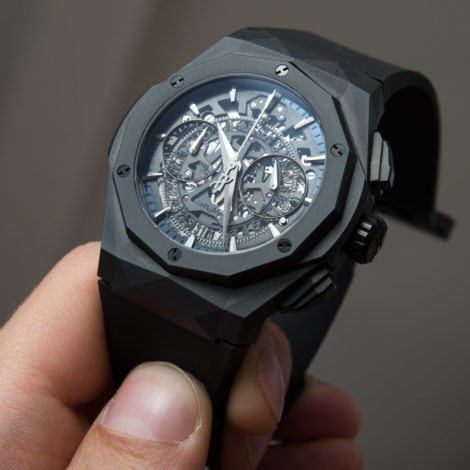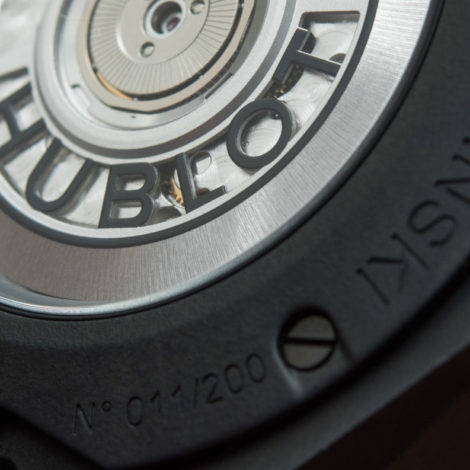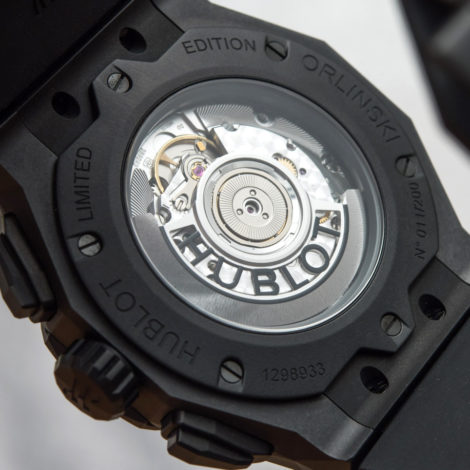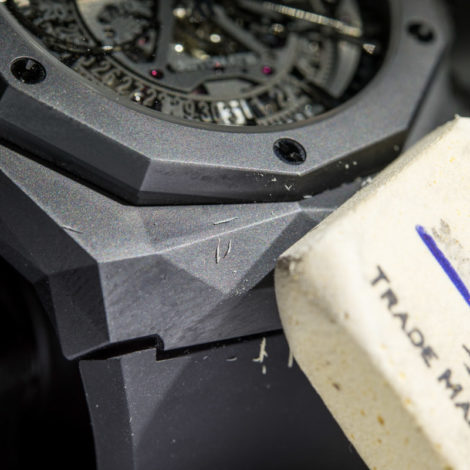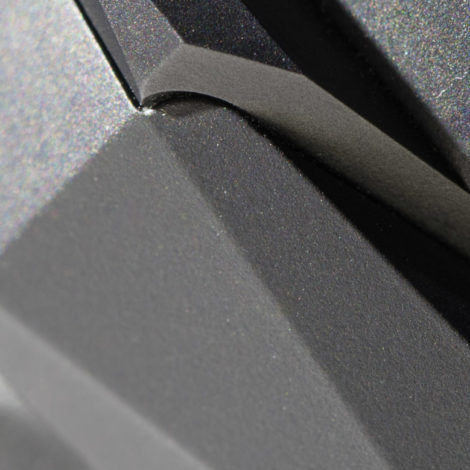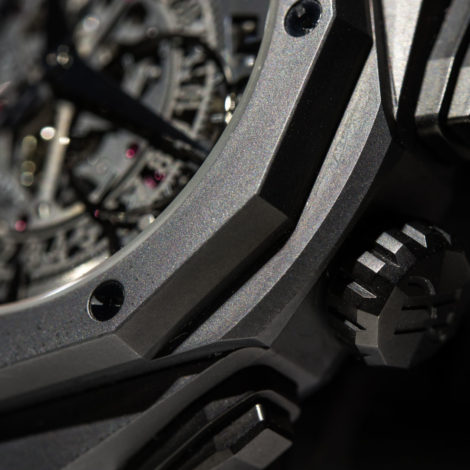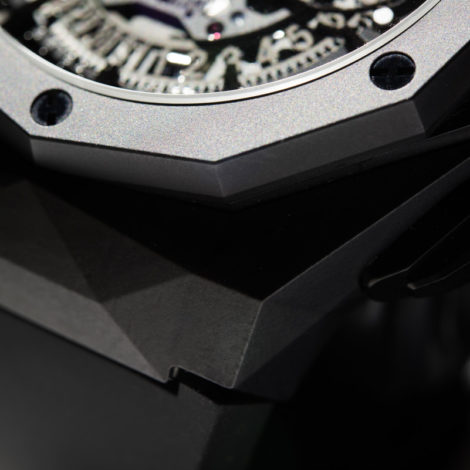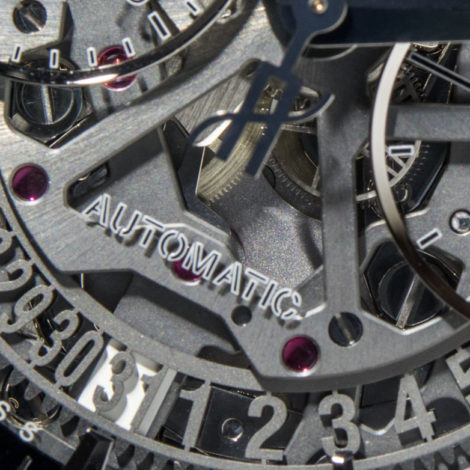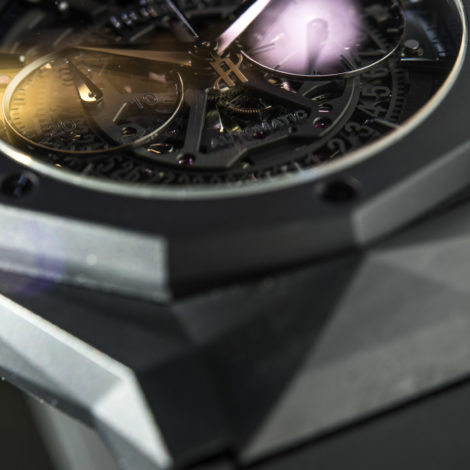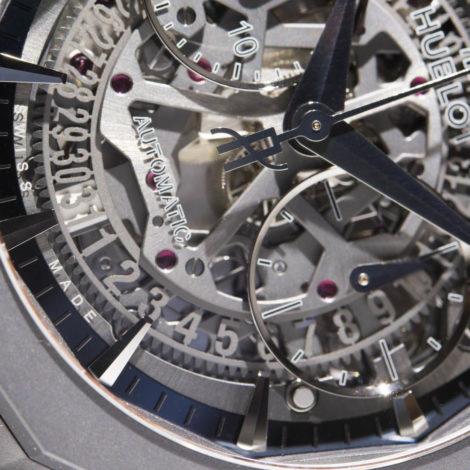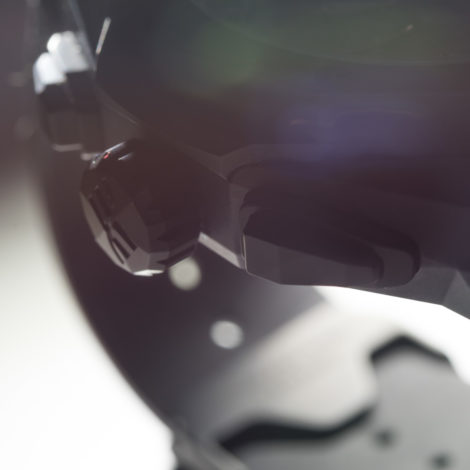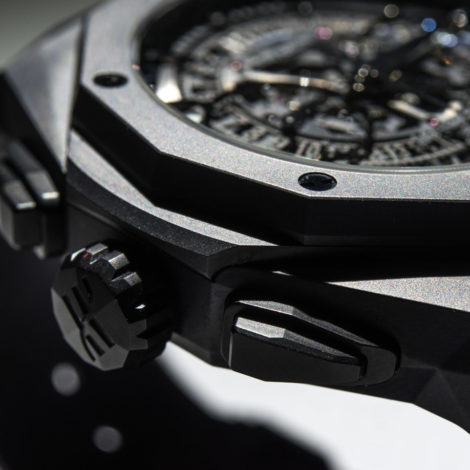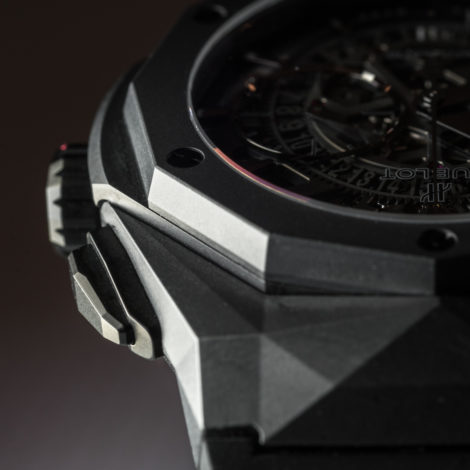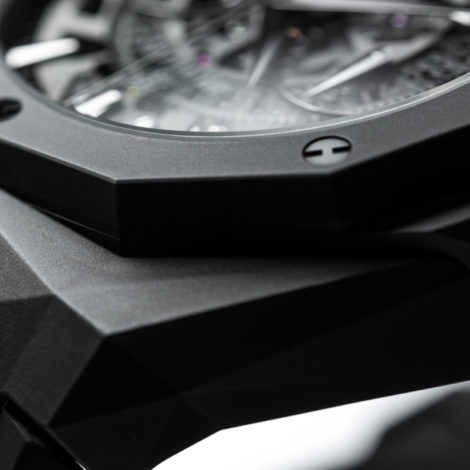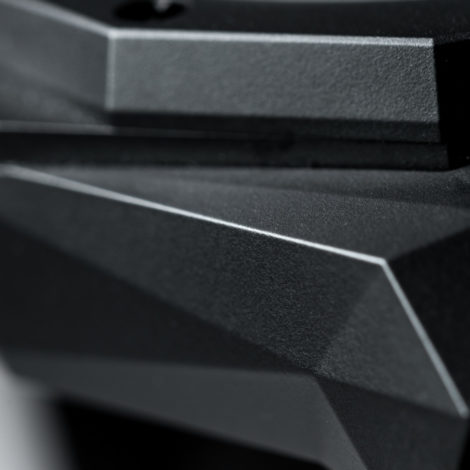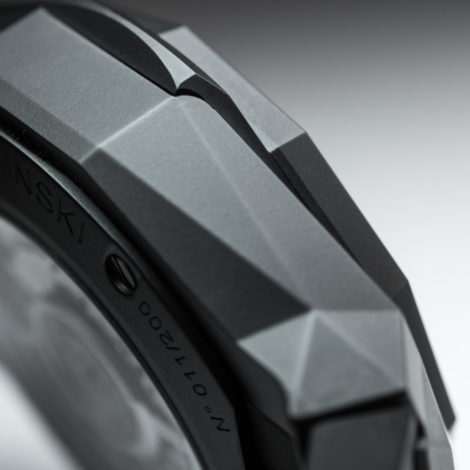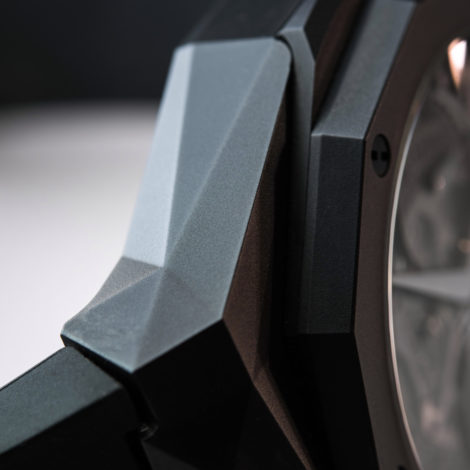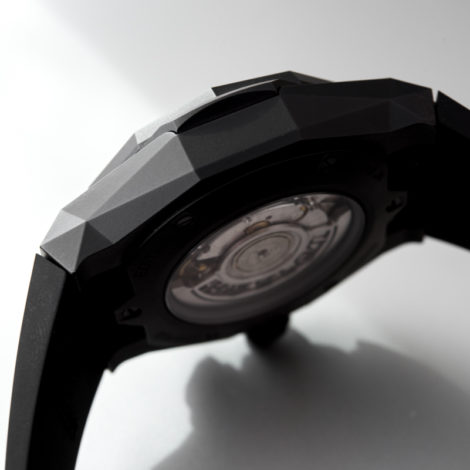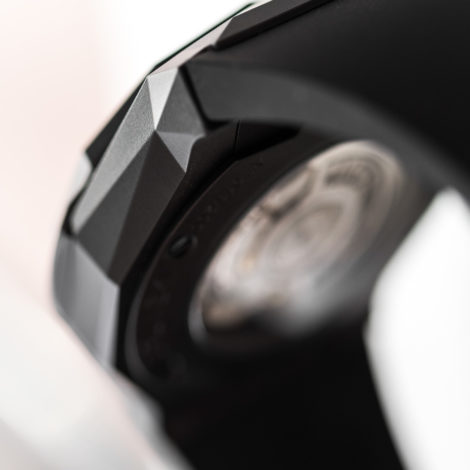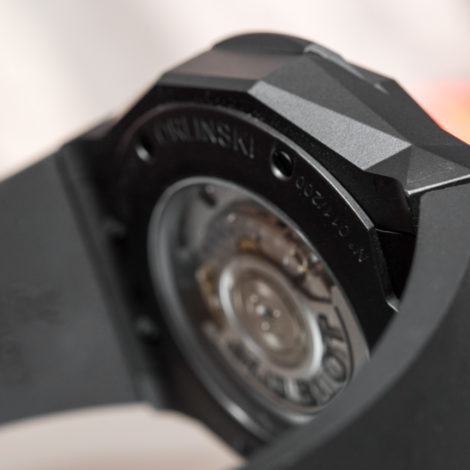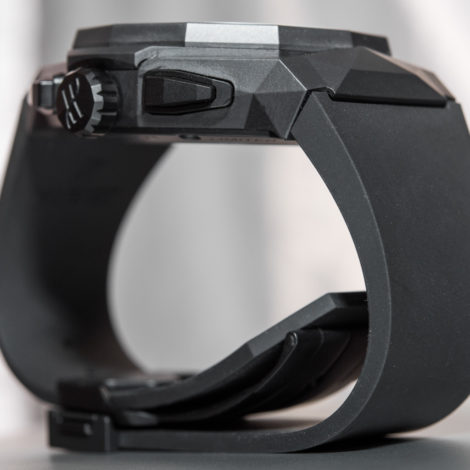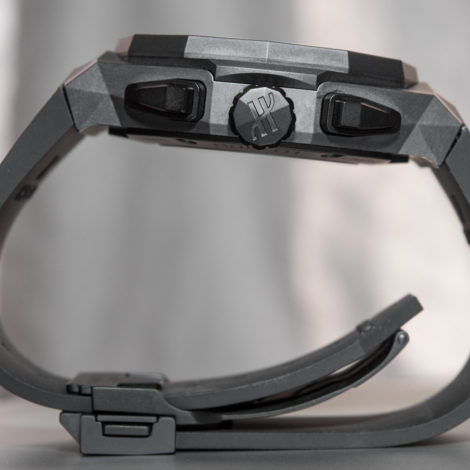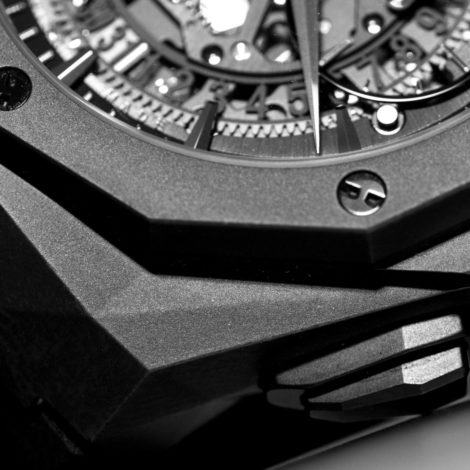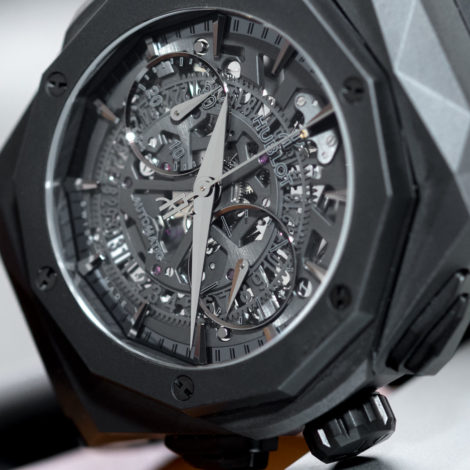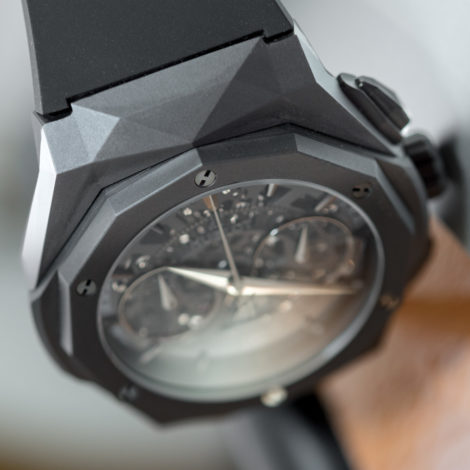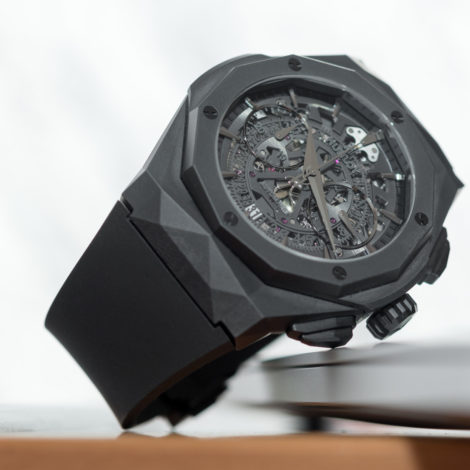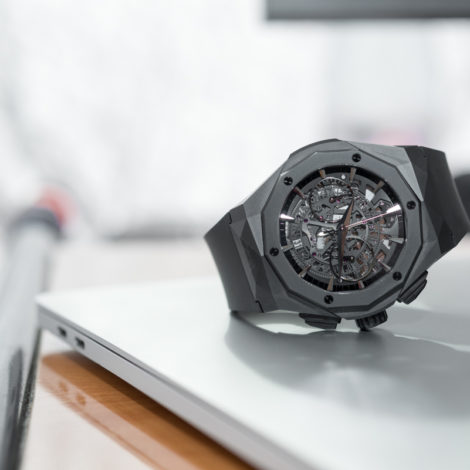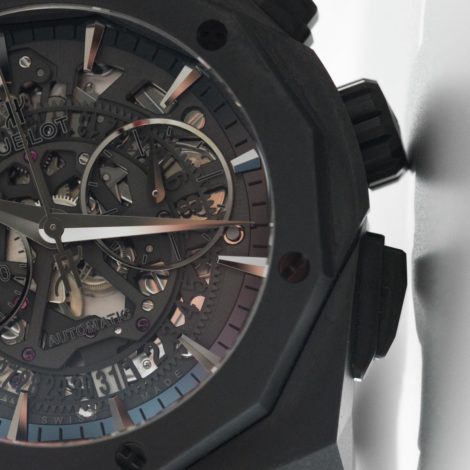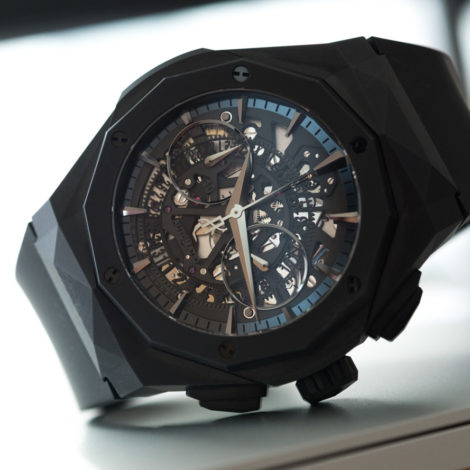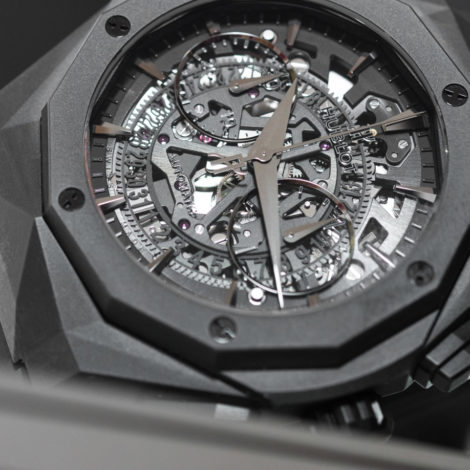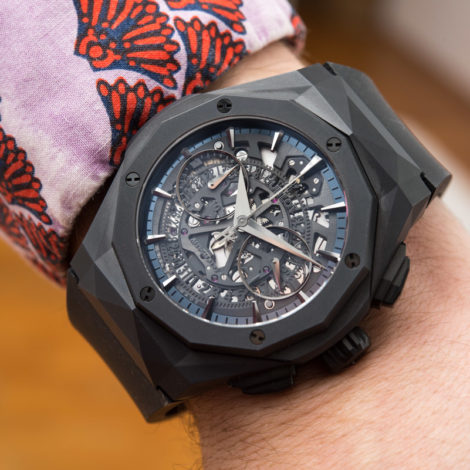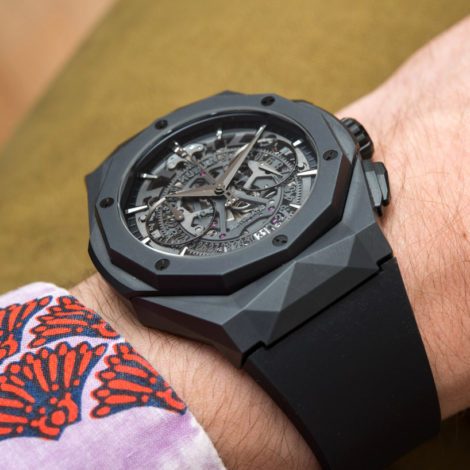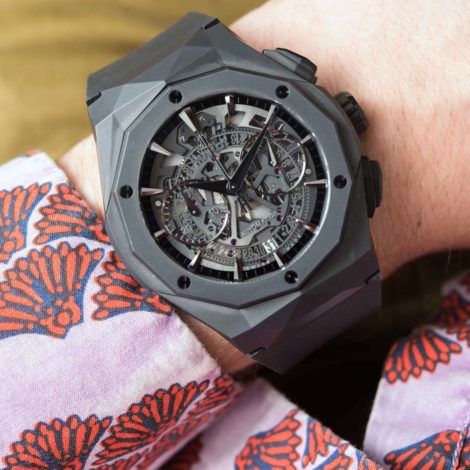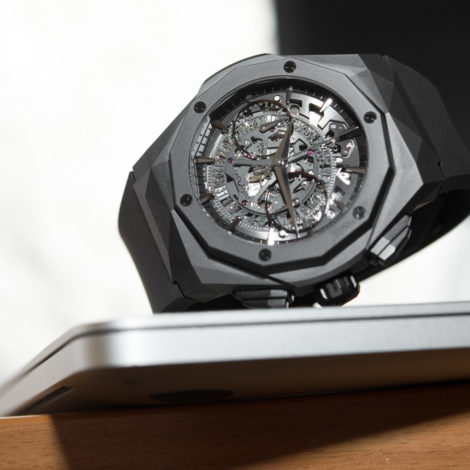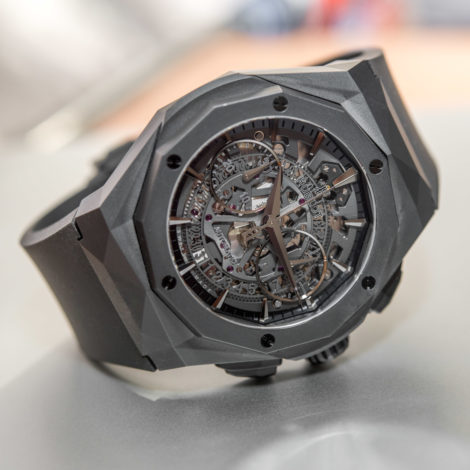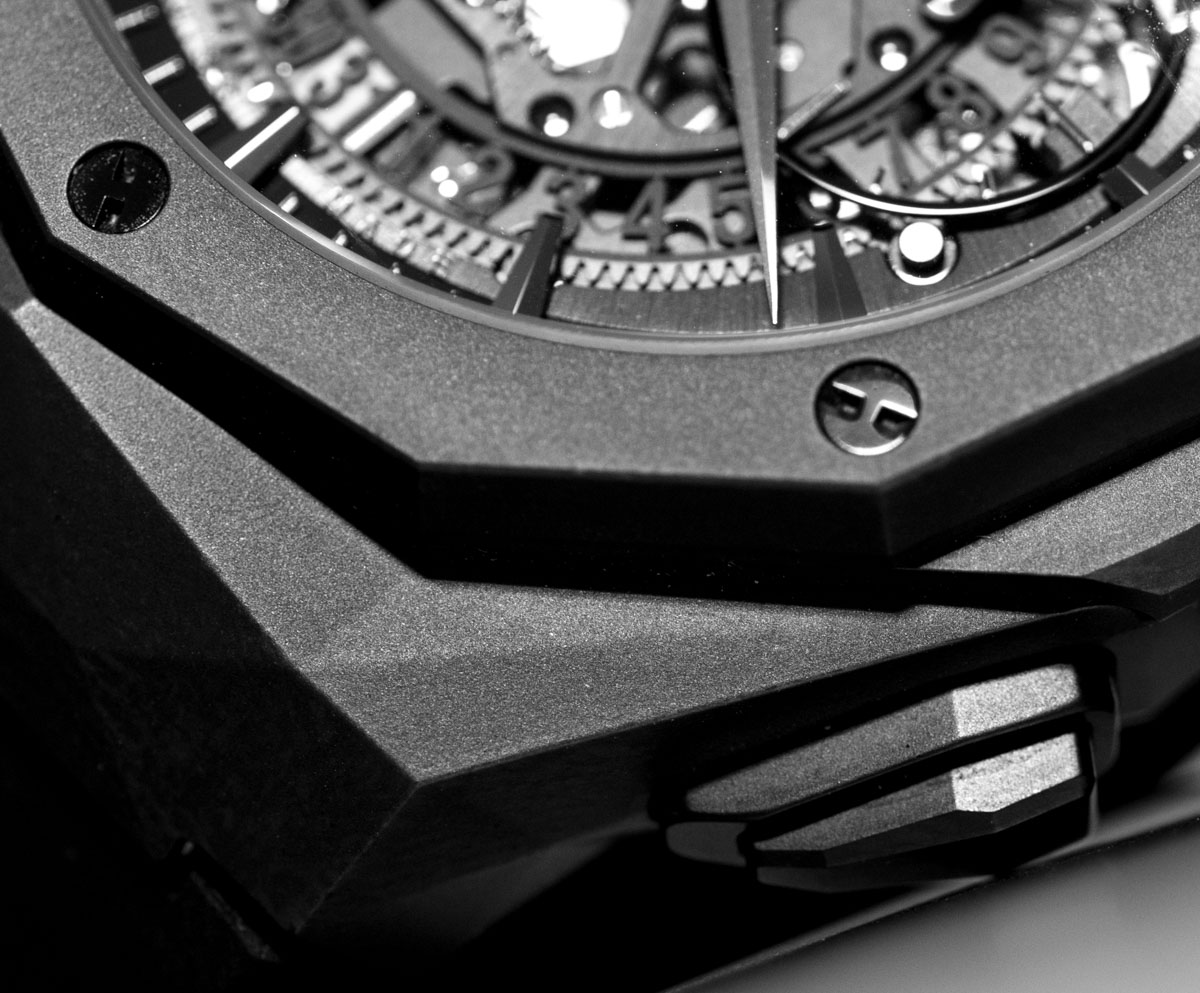
So… is this “ceramic will break” thing yet another over-repeated tale that WIS like to iterate so as to seem more important among their peers? Like the “Big 3” myth (which is BS worse than the in-house madness, if you ask me) or people arguing about the added accuracy of a remontoir when in truth maybe a handful of watchmakers and engineers will only know the honest answer – and I could go on, but you get where I’m going. As I’ve said, I had no idea how much a case like this could actually take, but hey, this is what reviews are about: that you wear a watch and you find things out about it that you simply won’t in a BaselWorld booth.

I was in the city running errands on a busy street, with cars and people coming from all directions, trying to find my way across quickly, efficiently, and safely. As I was negotiating my circumstances, I became aware of a loud ass bang, in fact, more like a ka-chink!!! “Oh no…” I thought to myself and I looked at the watch on my wrist in panic, with my pulse running up to scarcely experienced speeds. I saw black debris on the watch, relatively big pieces (like a 1/4 of an inch or half a centimeter) in size and so I wiped these off – coming to a lightning fast conclusion that wherever these are from, they won’t fit back together ever again…
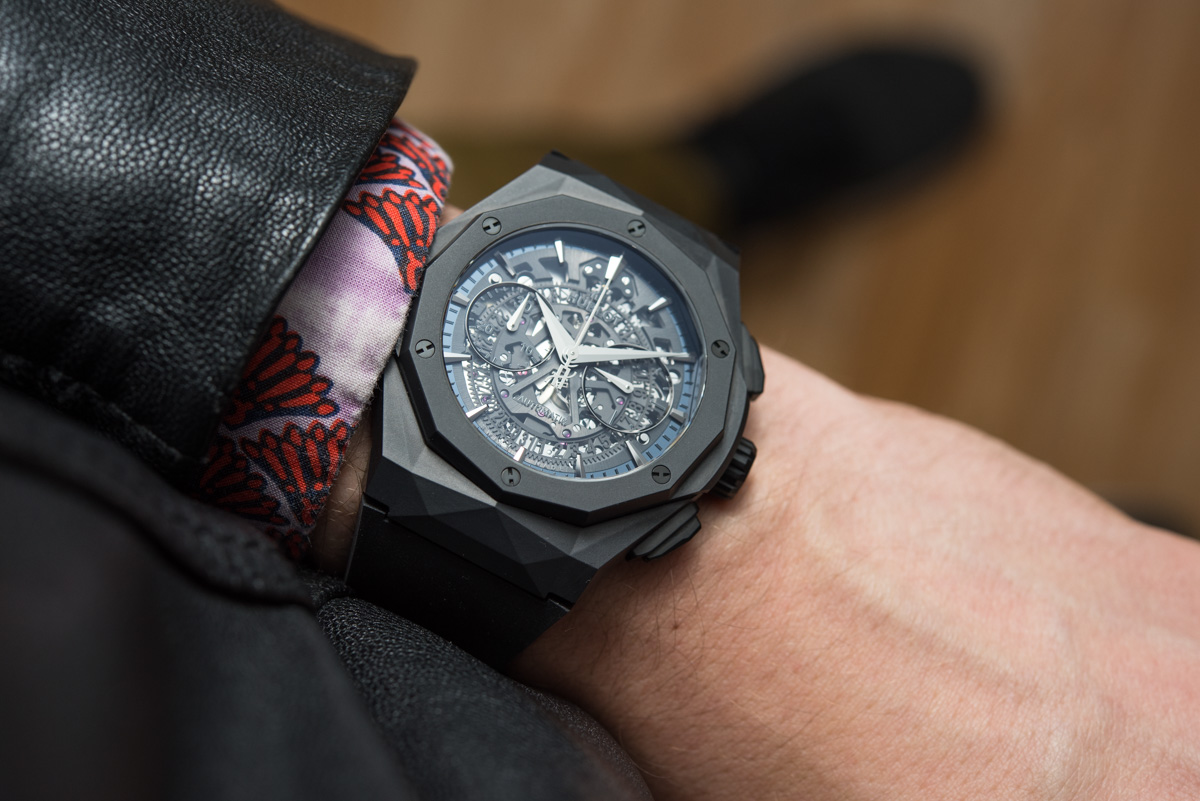
And so I was looking at the watch, trying to determine which massive chunk of the Orlinski-designed case was missing but I saw the watch to be intact. I took this opportunity to get mad at myself for seeing a halo of the once-intact case, as though my mind was playing its game with me, refusing to see what a perfectly everyday object of civilized life had done to it (at this point all I knew was that I banged the watch against something, didn’t know what it was).
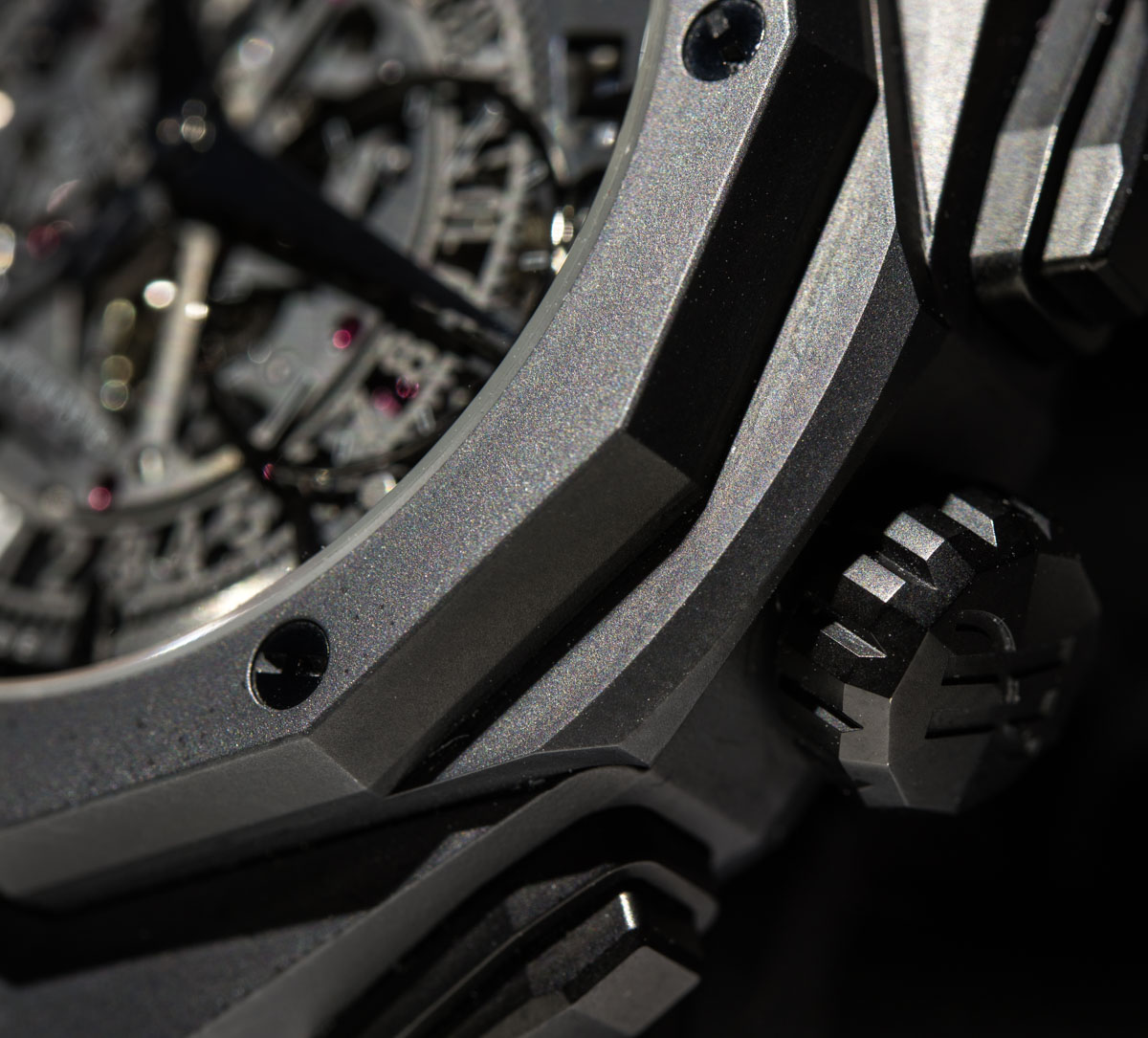
So I kept on looking at the watch, but all I could see as moments passed at a painfully slow pace, was a watch that was fully intact… It had its entire lug structure, its full bezel, all its pushers… not a damn scratch on it. I turned back and I saw a black lamp post and I realized that the watch had “bitten off” some of its black sealant paint, which is what ended up on the watch as debris – and what I thought to have been pieces of the case. In hindsight, I wish I had the calm to take a picture of the watch with all that black stuff on it, but I think you’ll humor my actions in this high alert situation. For a watch lover like myself, even if these come insured and are show-pieces, to break a watch is an ugly, lowly sin – like kicking a rabbit, or being a cyber bully at 15. Or 45.
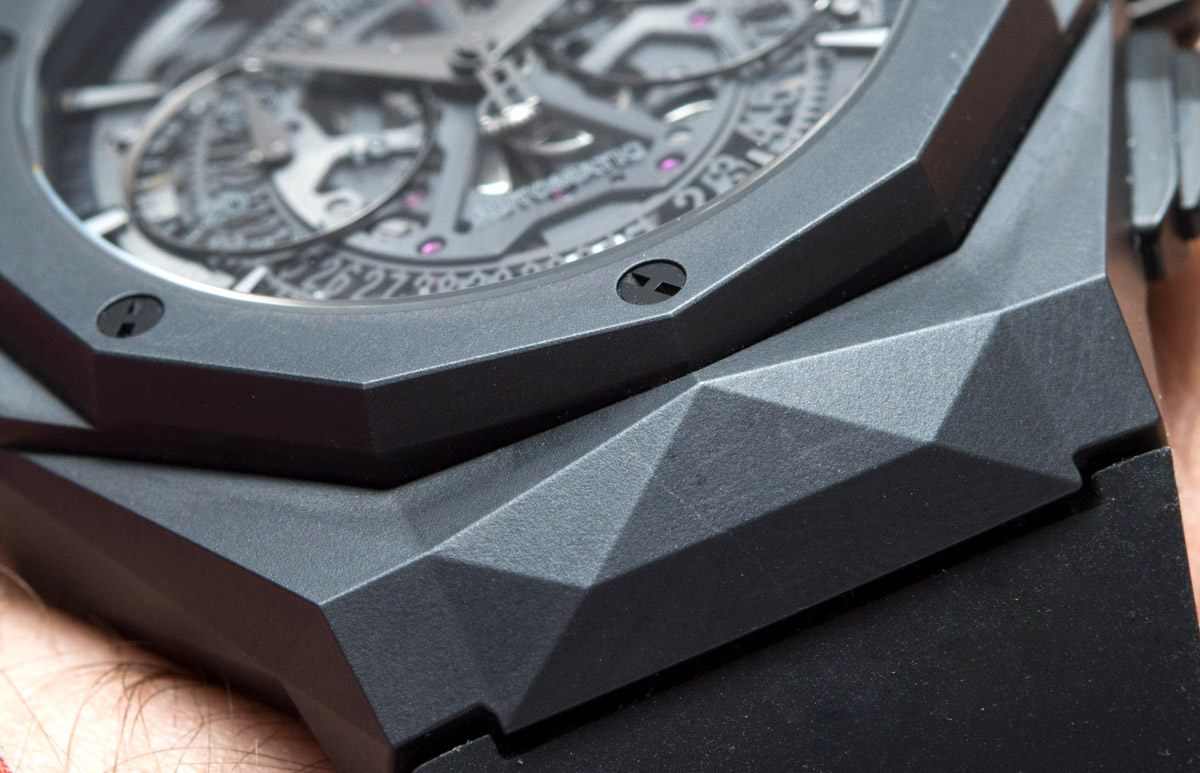
This neatly leads us to the second issue I have encountered. One morning I picked up the watch with this white scratch on it that went from the top of the angled lug all the way to the very bottom of it. I washed the watch and dried it with a soft cloth and the white line had become more faint (which is how you see it above), but that was about as faint as I could get it with a cleaning cloth and water. Because ceramic is so hard and can only be scratched by diamonds (which I’m short on at the moment), I figured that it wasn’t the case that got scratched but rather it is the case that scratched something else – does that make sense? In other words, when ceramic watches come in contact with something, they don’t dent or scratch, instead they have a deposit of the material they came in contact with. This little line could be from anything – from a coin or key as I was searching for something in my bag or pockets, a rivet used on jeans, whatever.
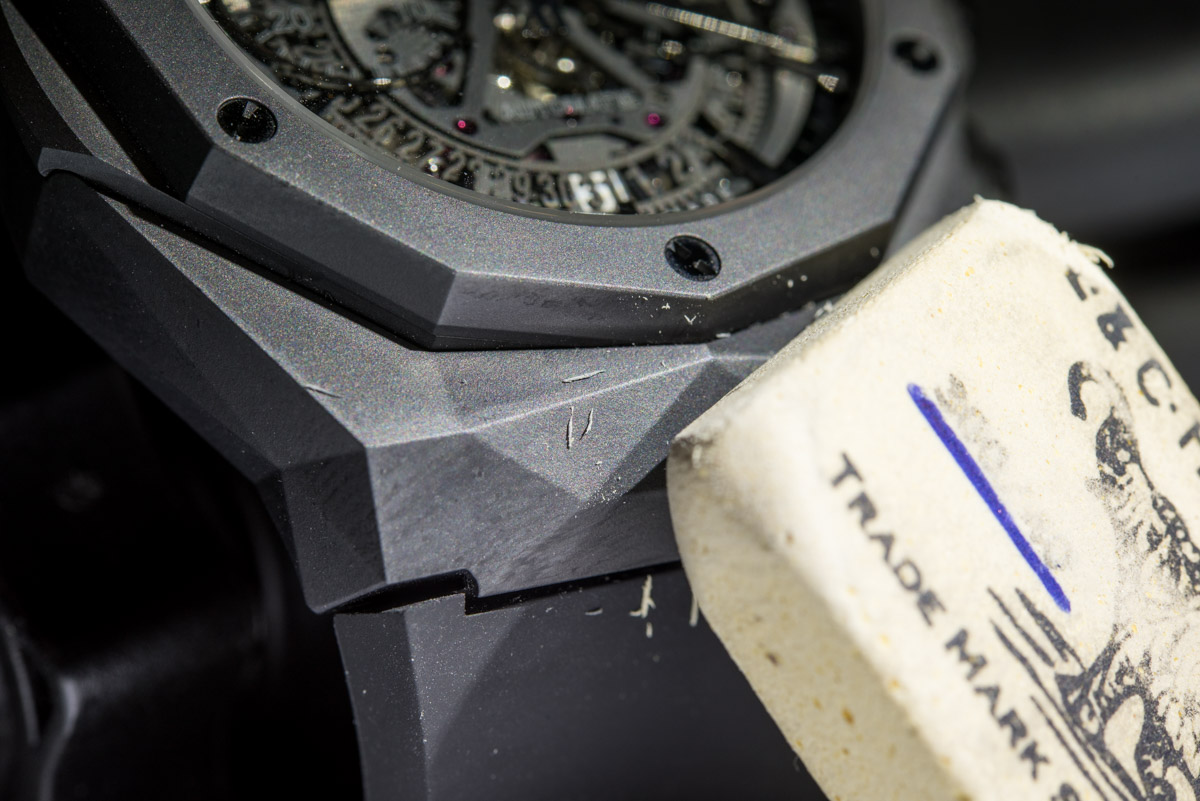
However, what was unnerving about the scratch was its resilience as it just didn’t want to disappear fully. I reached out to Hublot and learned that their technical department – no less – recommended using a regular eraser to get rid of the scratch. So I took one in hand and started using an eraser on an 18,000-dollar watch… Lo and behold, the scratch got more and more faint and it disappeared altogether in about 20 seconds.
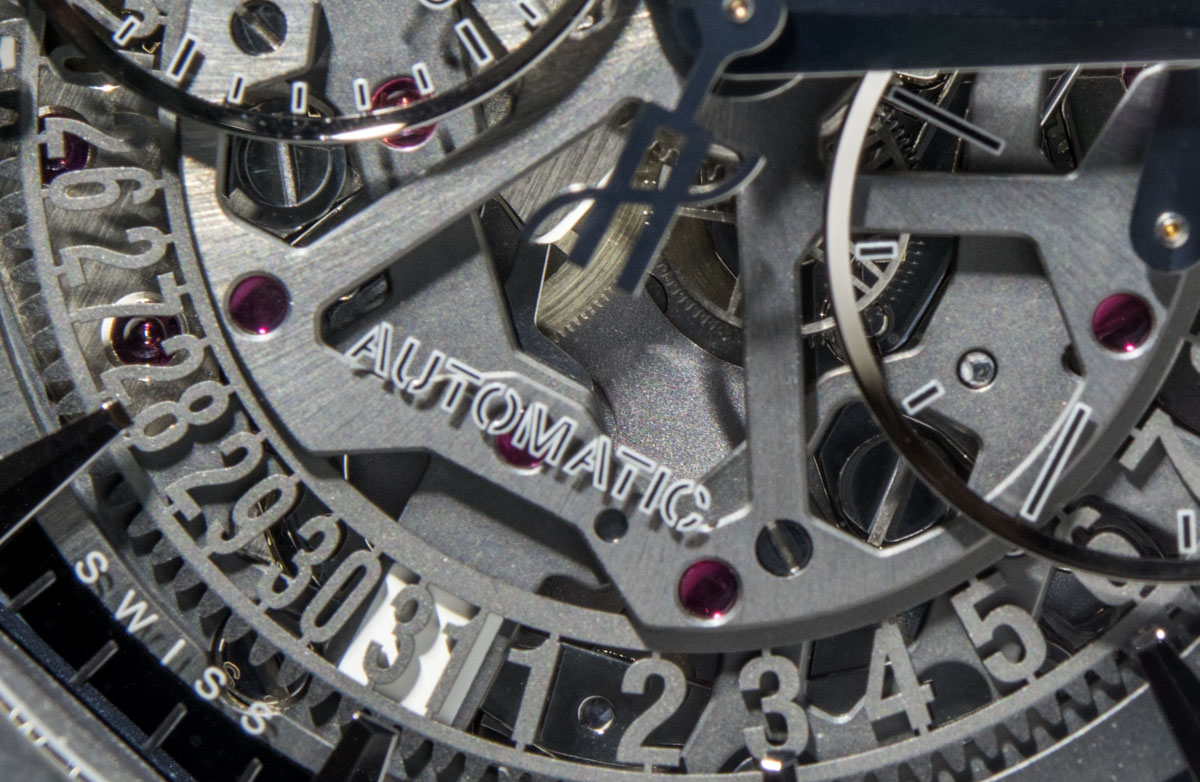
When ceramic is the topic among WIS, we regularly see heavy push-back because of its storied fragility and, most likely, also because people don’t have first hand experience (probably can’t even imagine) how amazing it is to own a watch that looks brand new forever. This, however, takes nothing away from the merits of this material because I can tell from experience: to erase a scratch off of a watch is a watch lover’s wet sci-fi dream come true, it’s one of the most unusual and yet most astonishing feats a watch case could ever do.
Nobody likes their watches scratched up. Maybe they accept it, maybe they like how 1 out of 50 scratches actually has a meaningful memory attached to it, but the other 49 are just mess, a deplorable departure from the watch’s intended looks and refined aesthetics. That’s what scratches are, not something even remotely likable or pursuable.
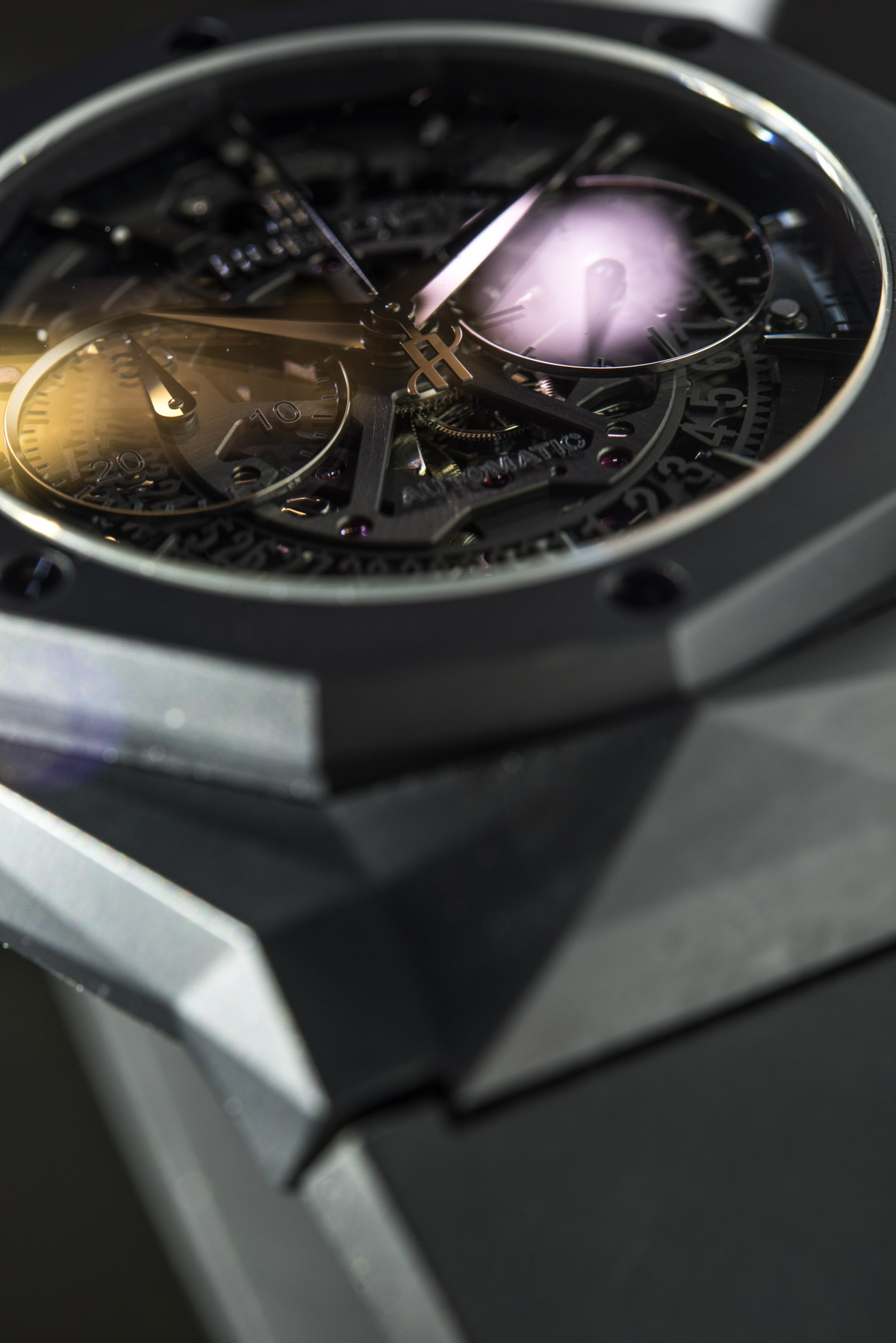
With all this said, is my “crash test” unshakable, universal proof, a testament to the remarkable durability of ceramic? Maybe it is, maybe it isn’t – but it definitely belongs to the “don’t try it at home” category of accidental experiments. It was a big bang (ha!), that I could both feel and hear so clearly I have WIS-PTSD from it and yet, there the watch was, fully intact, without a scratch on it. I certainly wouldn’t want to start dropping the watch on concrete or tiles, or bang it against stuff, but if you asked me before this review whether a ceramic watch could take an impact like this, I would have bet big on “hell no!”

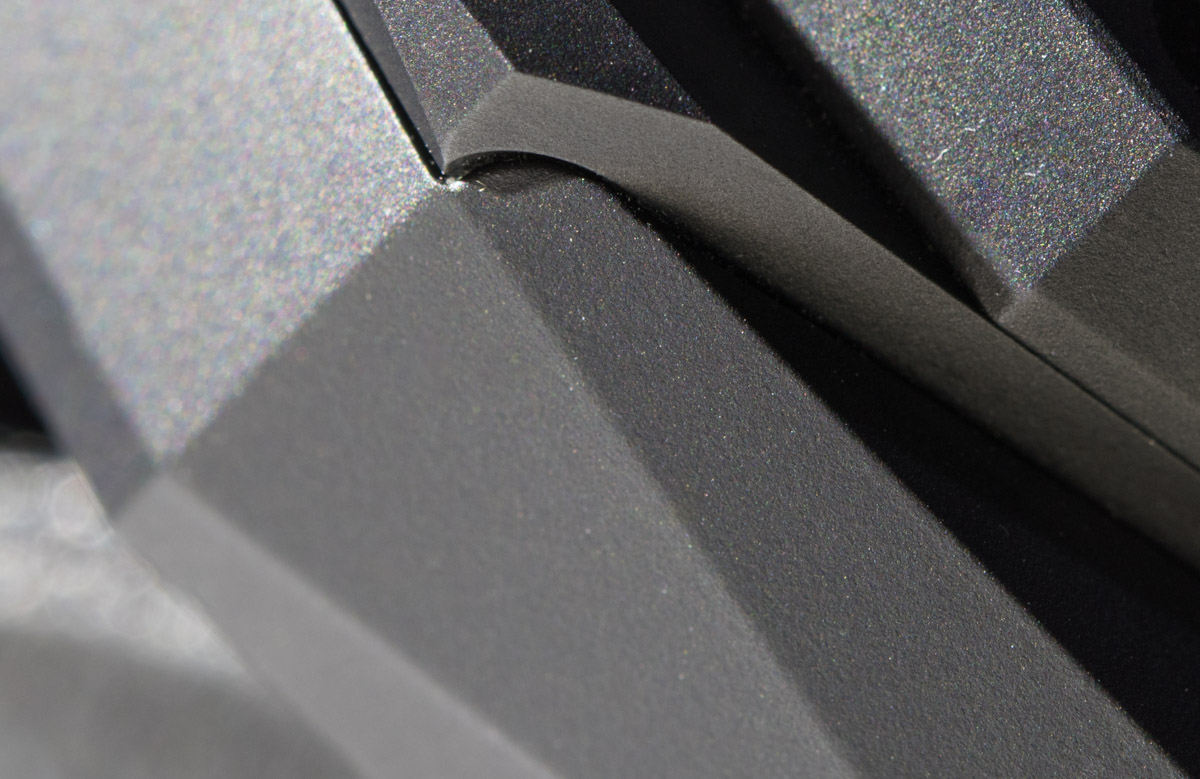
I am willing to go out on a limb and say that there is a good chance that the severity of impact required to shatter a ceramic case would need to be so high that such an impact would cause serious damage in a metal cased watch all the same. Maybe metal wouldn’t shatter (you could lose a lug though), but it would have a ding so deep that you’d sooner or later probably want to go for a new case anyway. There may be exceptions, there may be tension points in any material, but still, I am finishing this review coming away much more relaxed and convinced about ceramic than I’d ever been.
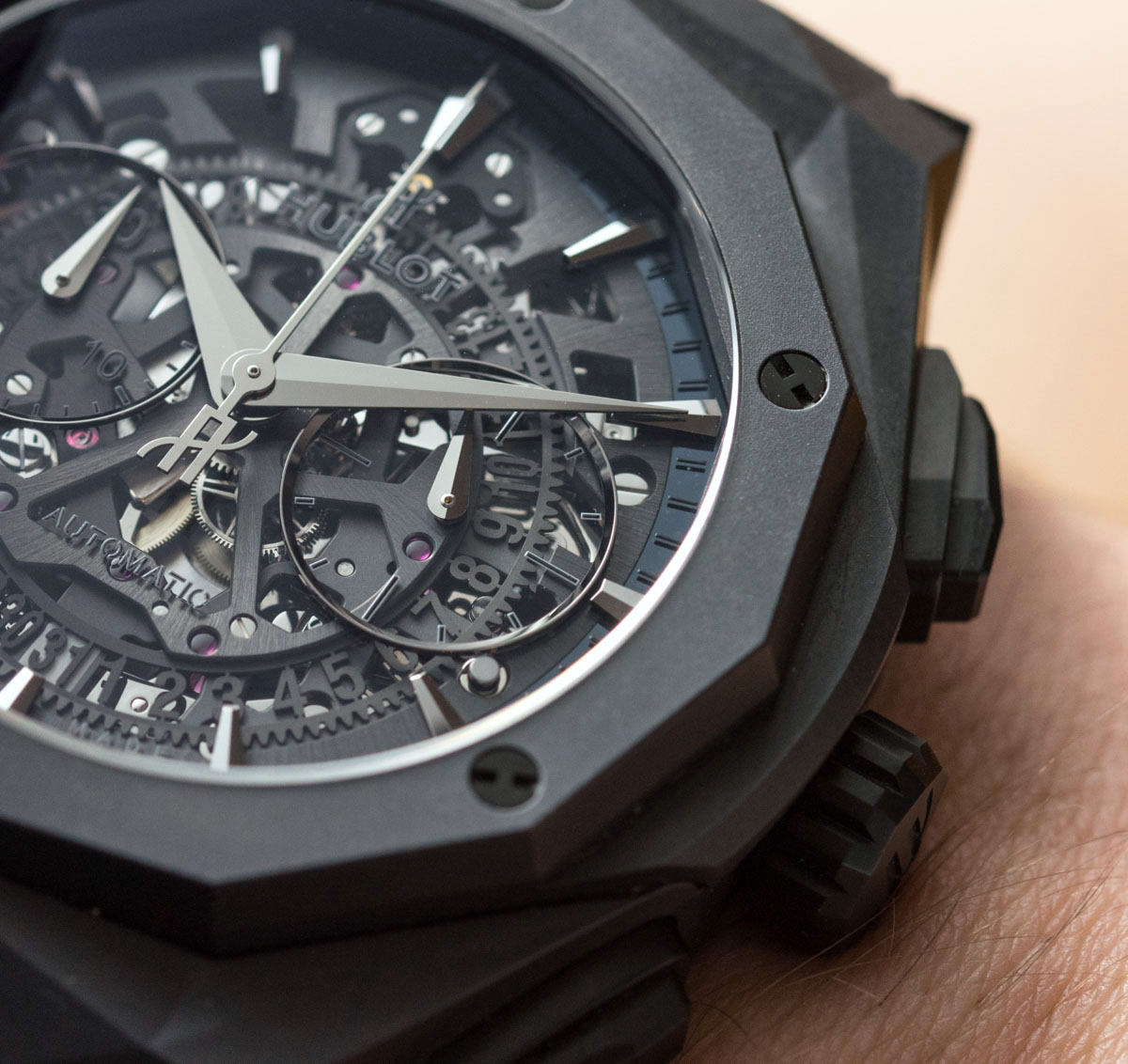
The Basics – Wearability, Legibility, Movement
This is getting long so here we go with the basic stuff. The Hublot Classic Fusion Aerofusion Chronograph Orlinski All Black comes in a 45mm wide and 13.40mm thick black ceramic case with a titanium caseback and polished titanium “H-screws.” It wears as large as any 45mm Hublot and while I guess the case’s facets wouldn’t look as great in a 42mm size, I hope we get to see that exercise done one day. This is an “All Black” model which is rather self-explanatory, although I will add that there are “more black” watches in Hublot’s line-up than this one. The open dial and the black-plated, highly polished hands and other dial elements, strangely enough, make for a brighter dial than the matte black versions we have seen before in non-Orlinski Classic Fusions.
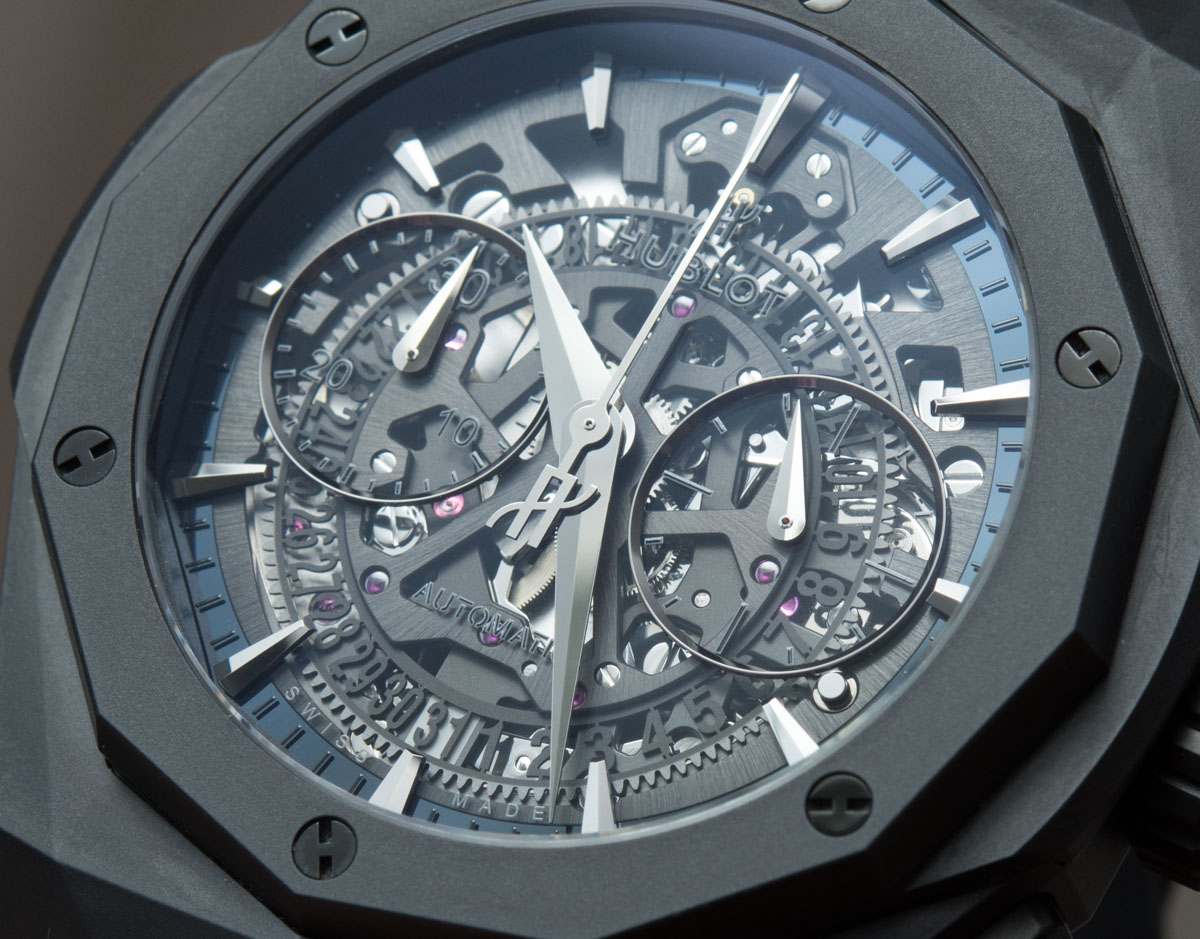
As a direct consequence, legibility ranges between OK to not-at-all-OK. In some lights, as it is captured directly above, the dial looks glorious, with the long, polished hands and the multi-faceted indices bathing in light. There is a sapphire ring around the dial that reflects in blue – not sure if that is done on purpose or not, but beyond the little purple jewels, this blue ring is the only color on this watch. Its blue-ish tint can be observed with the naked eye and under many lighting circumstances, it isn’t just the camera that captures it. There is a lot going on with the dial, as the Dubois Depraz module on the dial side of the HUB1155 caliber does what it does best – add visual complexity.
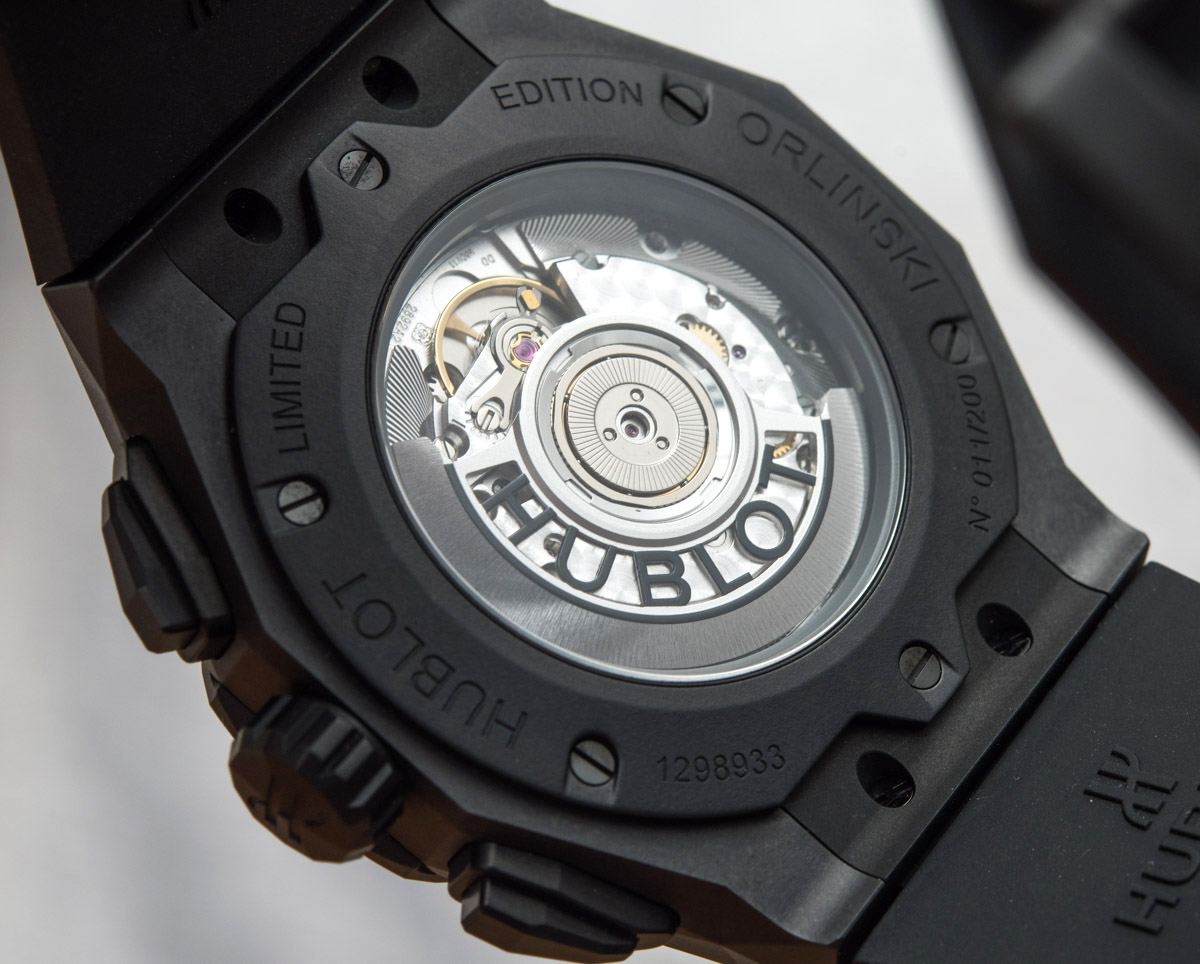
Speaking of the movement inside the Orlinski Classic Fusion, the base is an ETA 2892A2 with the aforementioned Dubois Depraz module fitted on top. There really isn’t much to say about this – it’s a lot like a Bang & Olufsen hi-fi with Philips internals in it, or an Aston Martin with a Volvo key and navigation system. All the nerds know and consequently look down on it – but those who actually buy these clearly don’t. There is no justice in the world for know-it-alls, is there? Nevertheless, Hublot and Dubois Depraz go as far as they can to make this combination look as complex as possible – there are some wheels and technical-looking plates on display, not to mention that massive date ring, fully on show.
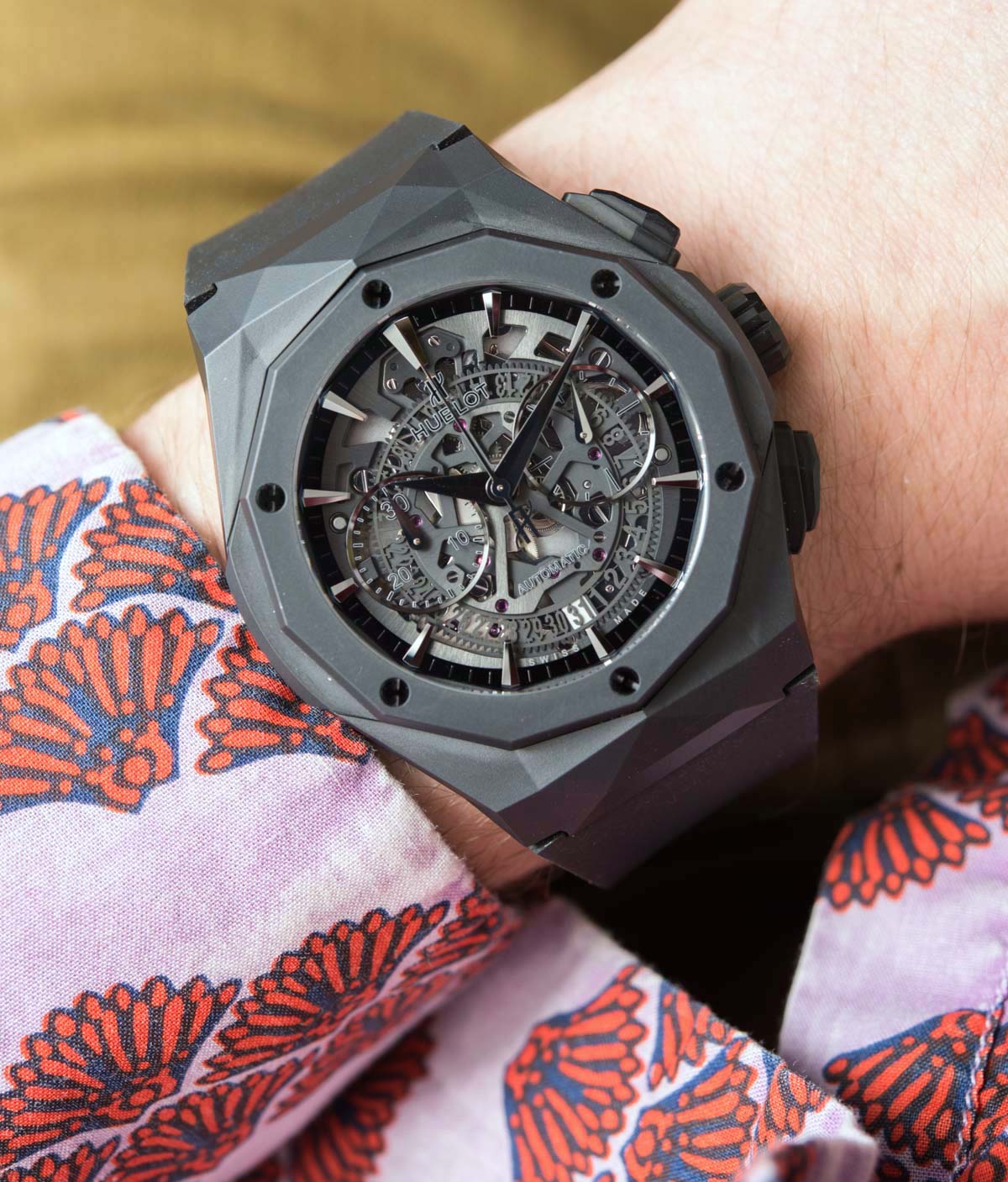
Niggles
Wearability on my small, 6.75″ (17.5cm) wrist wasn’t great. I have worn 45mm Hublots that felt great, but this one didn’t. I wasn’t really happy about the gaps that showed up where the strap was supposed to meet the notch at the two sides of each lug – had the strap not had to turn downwards so steeply (i.e. if it was worn on a larger wrist), the gaps wouldn’t have become visible. The strangest thing though was how I could set the watch so loose that I could slide my finger into the gap between the strap and the edge of my wrist, and yet the buckle would still leave a mark on the underside of my arm. So, while it wasn’t at all tight at each edge, it was still somehow tight underneath my wrist – never experienced this before. This really is a shame because clearly a lot of attention went towards the design of the buckle, a combination of black ceramic and black-plated stainless steel.
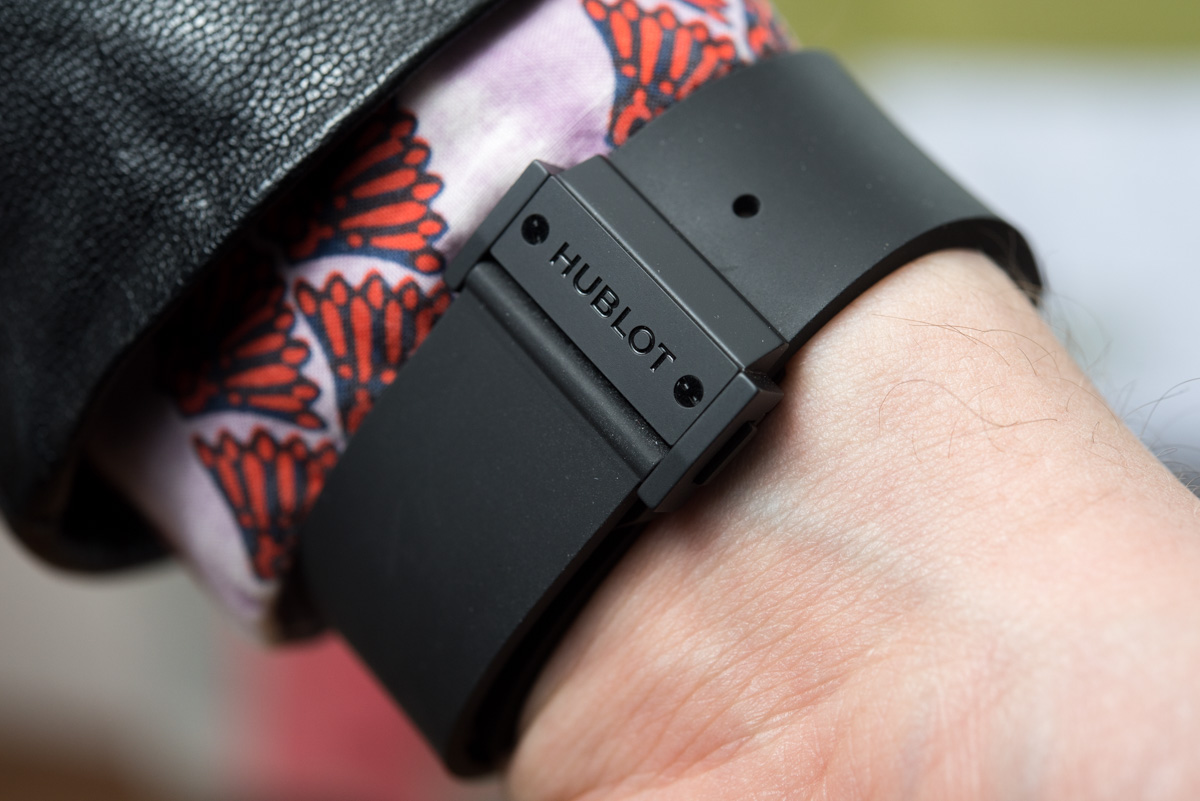
I also wasn’t a fan of the black strap. It didn’t have that sort of amazing, supple feel to it that I’d prefer to feel at this price point, and because of its dense, sticky texture, it picked up lint like a wet paper towel picks up crumbles (a total brain freeze and consequent lack of a better analogy must be humored here). Countless pieces of white dust and lint would be seen on the strap and while you can indeed wash it, both the ceramic case and the strap turned out to be very difficult to clean properly. Just rinsing and wiping the case would leave black marks of water all over it, as though water stuck to the ceramic somehow.

Had I had the time and capacity, I would have loved to put this watch on a yellow or red strap to make it more fun and let the case stand out a bit more, but this was not to be as I had to send it back after two weeks of having it around. Still, an adventurous two weeks these had proven to be, as I gained more first-hand experience about ceramic than I knew I was in for. This is what reviews are all about, after all.
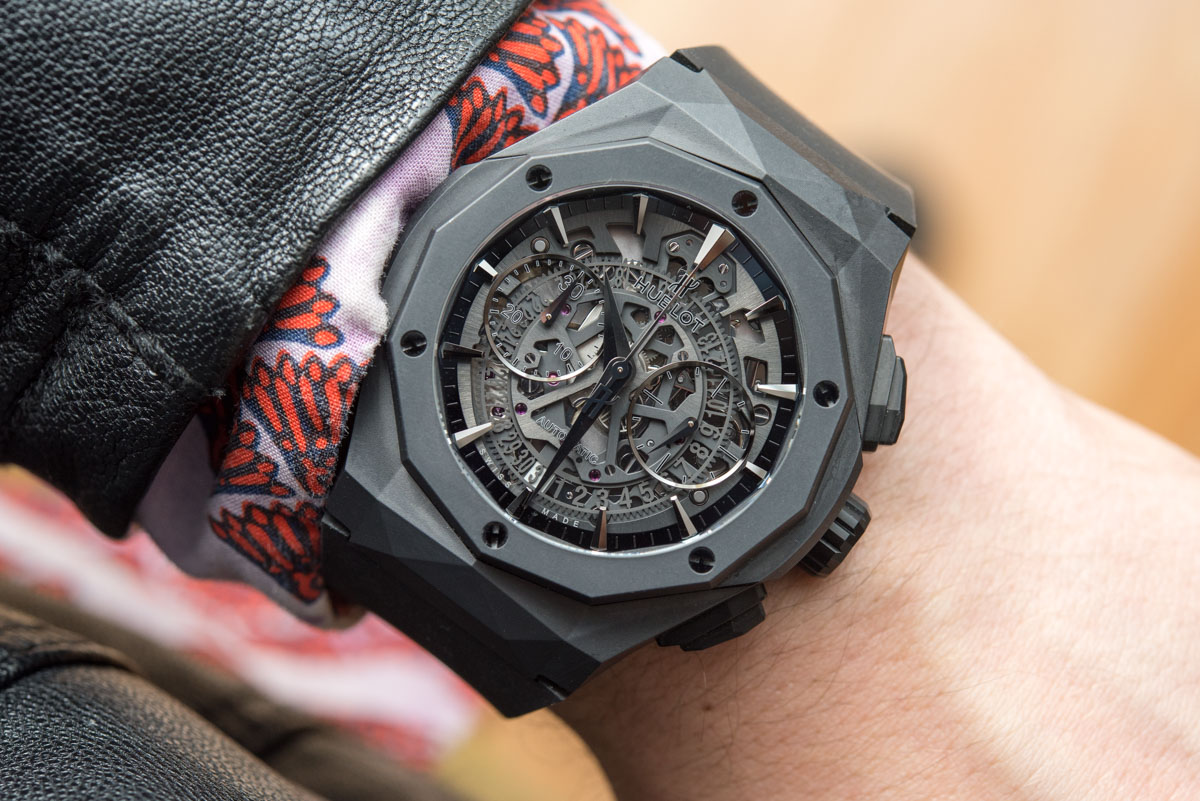
Summary
All in all, I was amazed by the polished titanium and the blue ceramic Orlinski pieces in January, but found that this All Black iteration had a bit less of a punch. Some, and I have no doubt that “some” will amount to more than 200 buyers, will love this All Black version for that slightly more relaxed take, though. Ceramic is amazing thanks to its incredible hardness, erasable marks (I still can’t get over that sorcery) comfortable touch and feel – less so for its hindered cleaning properties. The question is: would I make an $18k bet that ceramic will last, or chicken out and get something in titanium? To be honest, I’m still not entirely sure but I’ve never been closer to fully convinced about it being the right way to go.
Price for the Hublot Classic Fusion Aerofusion Chronograph Orlinski All Black (reference 525.CI.0119.RX.ORL18) is $18,800. hublot.com
Necessary Data
>Brand: Hublot
>Model: Classic Fusion Aerofusion Chronograph Orlinski All Black (reference 525.CI.0119.RX.ORL18)
>Price: $18,800 USD
>Size: 45mm wide, 13.4mm thick.
>Would reviewer would personally wear it: Unlike other 45mm Hublots, this one wasn’t a perfectly comfortable fit for my 6.75″ wrist, so this is a no.
>Friend we’d recommend it to first: Likes design and buys stuff for his own entertainment, not to impress yahoos.
>Best characteristic of watch: Ceramic case is well-made and stood all the planned and unplanned tests I could expose it to. Intelligent, bold, yet likable design, I loved the angular look…
>Worst characteristic of watch: …But perhaps the All Black isn’t the best match for this design, I was more impressed by the blue ceramic or polished titanium versions.

